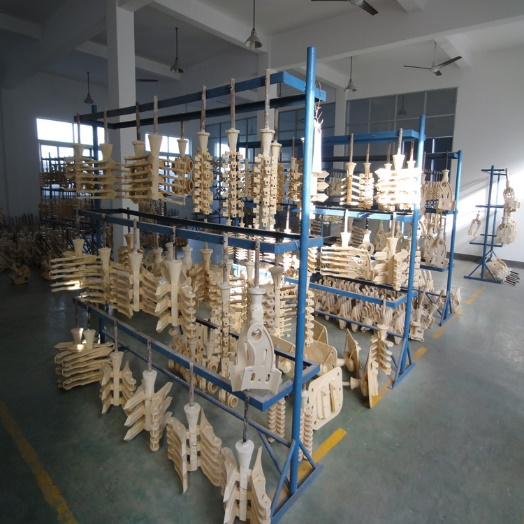What is Investment Casting and Why is it Essential in Modern Manufacturing?
2024-11-13
Investment casting, also known as lost-wax casting, is a versatile and precise metal-forming technique that has been utilized for centuries. From aerospace components to intricate jewelry, this method has proven indispensable in producing high-quality parts with complex geometries. But what exactly is investment casting, and why has it remained a crucial part of modern manufacturing?
What is Investment Casting?
Investment casting is a manufacturing process in which a model of the object to be cast is created using a material that can be melted away. This model is then coated in a ceramic shell to form a mold. Once the mold is hardened, the model is melted or "lost," leaving behind a cavity that can be filled with molten metal. After the metal has solidified, the mold is broken away to reveal the final cast part.
The term "investment" refers to the process of investing the pattern in a shell, which involves a series of steps like creating the pattern, coating it with ceramic, and then firing it to harden the mold. It is often referred to as "lost-wax casting" because the original wax pattern is melted away during the process, leaving behind only the metal part.
The Process of Investment Casting
1. Pattern Creation
The process begins with creating a pattern of the part to be cast. Traditionally, this pattern was made from wax, but today, it can be made from a variety of materials, such as plastic or metal. In most cases, the pattern is produced using 3D printing or injection molding to achieve high levels of detail.
2. Shell Building
Once the pattern is created, it is coated in a ceramic shell. This shell is built layer by layer, with the pattern being repeatedly dipped in a ceramic slurry and sprinkled with sand. Each layer is allowed to harden before the next layer is applied, resulting in a durable mold.
3. Drying and Hardening
The ceramic-coated pattern is then dried and hardened, ensuring that the mold is strong enough to withstand the molten metal during casting.
4. Pattern Removal
Next, the pattern is heated in an oven, causing it to melt or burn away, leaving behind the cavity in the ceramic shell. This is why the method is called "lost-wax" casting.
5. Metal Pouring
With the mold now empty, molten metal—usually steel, aluminum, or bronze—is poured into the cavity where the pattern once resided. The molten metal fills the mold and takes on the shape of the original pattern.
6. Cooling and Shell Removal
After the metal has cooled and solidified, the ceramic shell is broken off, revealing the cast metal part. The final part may require some finishing, such as grinding, polishing, or machining, to achieve the desired surface finish and dimensions.
Benefits of Investment Casting
1. High Precision and Detail
Investment casting is known for its exceptional precision, making it ideal for producing complex and intricate parts. The process can achieve fine details, thin walls, and tight tolerances that are difficult or impossible to achieve with other methods like sand casting or die casting.
2. Material Flexibility
Investment casting allows the use of a wide range of materials, including ferrous and non-ferrous metals, high-performance alloys, and even certain metals that are difficult to cast using other methods. This versatility makes investment casting suitable for a broad range of industries.
3. Minimal Material Waste
Unlike traditional machining or other casting methods, investment casting results in minimal material waste. The precise nature of the process means that only a small amount of material is required, which is not only cost-effective but also environmentally friendly.
4. Complex Geometries
Investment casting excels at producing parts with complex geometries that would be challenging or impossible to create with other manufacturing processes. This makes it an essential method for industries that require highly specialized components, such as aerospace, medical devices, and automotive industries.
5. Excellent Surface Finish
The ceramic mold provides a smooth surface for the cast part, often requiring little to no additional finishing. This means that parts produced through investment casting typically have a high-quality finish, reducing the need for post-casting operations.
6. Consistency and Reproducibility
Investment casting offers consistency and reproducibility, ensuring that each cast part is almost identical in terms of quality and shape. This is particularly important for mass production runs where uniformity is essential.
Applications of Investment Casting
Investment casting is used in a wide variety of industries due to its versatility and ability to produce high-precision parts. Some of the most common applications include:
1. Aerospace Industry
The aerospace sector relies heavily on investment casting for manufacturing complex components such as turbine blades, engine parts, and structural components. The precision and material properties of investment casting make it ideal for producing lightweight, high-strength parts that can withstand extreme conditions.
2. Medical Devices
In the medical field, investment casting is used to create surgical instruments, implants, and other precision components that require strict tolerances and biocompatibility.
3. Automotive Industry
Many automotive parts, including engine components, transmission gears, and suspension parts, are made using investment casting. The ability to produce high-strength, lightweight parts with intricate designs makes it an invaluable process for automotive manufacturing.
4. Defense and Military
For military and defense applications, investment casting is used to produce high-performance parts for weapons, vehicles, and equipment. The durability and reliability of investment casting make it suitable for parts that are subjected to harsh environments.
5. Jewelry and Art
Investment casting is also used in the jewelry industry, allowing designers to create intricate pieces with fine details. The process has been used for centuries to produce gold, silver, and platinum jewelry with high-quality finishes.
Challenges and Considerations
While investment casting offers numerous advantages, there are also some challenges to consider:
- Cost: The initial setup for investment casting can be expensive, particularly for creating patterns and molds. This makes it less suitable for small-scale or low-volume production runs.
- Complexity: The process can be time-consuming, especially when producing highly intricate parts, requiring careful planning and attention to detail.
- Limited to Certain Sizes: While investment casting can handle complex geometries, there are size limitations, especially for very large parts that may require other casting methods.
Conclusion
Investment casting remains a critical process in modern manufacturing due to its precision, material flexibility, and ability to produce complex geometries. It continues to be essential for a wide range of industries, from aerospace and automotive to medical devices and jewelry. As manufacturing technologies continue to evolve, investment casting is likely to remain a key player in producing high-quality, intricate, and durable parts that meet the rigorous demands of today’s industries.



